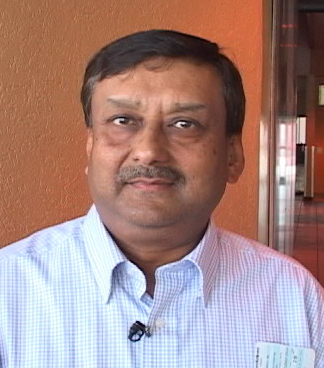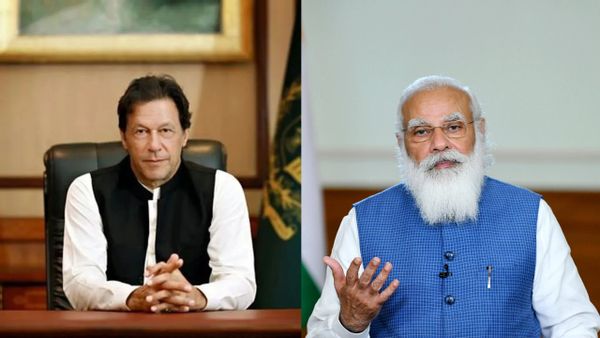
“Hoping for a quick turn-around in Indo-Pakistan relations may just be wishful thinking. Perhaps it is, but I must admit that I have secretly indulged in it since 1978 when I went to Egypt on my first diplomatic posting and witnessed Anwar Sadat and Menahem Begin burying the hatchet between their two countries. Egypt and Israel too had fought deadly wars in 1948, 1967 and 1973, but there is peace between them now, even though some people refer to it as ‘a cold peace’.
It is an axiomatic truth that our region needs development not conflict. To continue on our present path would be catastrophic. By working together, we can usher in a new age filled with hope not just for the two countries but for the whole of South Asia.
On the occasion of Pakistan’s 70th National Day on 23rd March this year, Prime Minister Narendra Modi wrote a letter to Prime Minister Imran Khan, saying: “As a neighboring country, India desires cordial relations with the people of Pakistan. For this, an environment of trust, devoid of terror and hostility, is imperative.” He added: ” Excellency, at this difficult time for humanity, I would like to convey my best wishes to you and the people of Pakistan for dealing with the challenges of the COVID-19 pandemic.” Three days earlier, PM Modi had tweeted wishing PM Imran Khan a speedy recovery after he and his wife tested positive for the deadly virus. “Best wishes to Prime Minister @ImranKhanPTI for a speedy recovery from Covid-19,” he had said in his tweet.
On 29th January, Imran Khan replied to Prime Minister Narendra Modi thanking him for his greetings on Pakistan Day. Khan also said: “The people of Pakistan also desire peaceful, cooperative relations with all neighbors including India. We are convinced that durable peace and stability in South Asia is contingent upon resolving all outstanding issues between India and Pakistan, in particular the Jammu and Kashmir dispute.” He added that the that creation of an enabling environment is imperative for a constructive and result-oriented dialogue. The Pakistani Prime Minister also conveyed his wishes for the people of India in the fight against the Covid pandemic.
Other positive signs
In this regard, there are some other positive developments which also need to be noted. Both the armies recommitted themselves to the 2003 ceasefires along the line of control in J&K in February. After about two-and-half years, a delegation of Pakistani officials arrived in India for a meeting of the permanent Indus commission this week. Last week, Foreign Secretary Harsh Vardhan Shringla said India wants good friendly ties with Pakistan provided there’s a conducive atmosphere for dialogue. Similar sentiments have been expressed across the border too. Pakistan Army chief General Qamar Javed Bajwa said on March 18 that it was time for India and Pakistan to “bury the past and move forward.” He added that the peace between the two neighbors would help to “unlock” the potential of South and Central Asia.
There are some hopeful signs in regard to trade also. Pakistan had suspended trade ties with India after New Delhi revoked the special status of Jammu and Kashmir in 2019. However, in May 2020, Pakistan lifted the ban on the import of medicines and raw material from India to ensure there is no shortage of essential drugs amid the COVID-19 pandemic. This was the first step of reversing the complete suspension of trade with India. Now, according to media reports, Pakistan’s textile ministry headed by Prime Minister Imran Khan has recommended the lifting of a ban on the import of cotton from India to bridge the raw material shortfall the country’s textile sector was facing. Currently, cotton and yarn imports are allowed from all countries except India. The textile sector in Pakistan strongly favors imports of cotton from India as they are much cheaper than imports from other countries. Pakistan Textile Exporters Association Chairman Khurram Mukhtar tweeted that the import of raw cotton, yarn and grey fabric from India will bridge the gap in demand and supply and will enable Pakistani exporters to continue the growth momentum.
Two steps forward, two steps backwards
The past has shown that Indo-Pak relations are a case of two steps forward followed by two steps backwards. However, it cannot be emphasized enough how important it is to end the deeply ingrained hostility unless we want to hurtle towards another conflict, one that will perhaps be more destructive than any in the past. We need bold and out-of-the-box thinking to chart out a new course. To use a cliché, the bull has to be taken by the horns. Hoping for a quick turn-around in Indo-Pakistan relations may just be wishful thinking. Perhaps it is, but I must admit that I have secretly indulged in it since 1978 when I went to Egypt on my first diplomatic posting and witnessed Anwar Sadat and Menahem Begin burying the hatchet between their two countries. Egypt and Israel too had fought deadly wars in 1948, 1967 and 1973, but there is peace between them now, even though some people refer to it as ‘a cold peace’.
Pakistan’s hostility
Sadly, amidst all the turbulence which has marked Pakistan’s history, and which has seen civilian governments and military juntas play musical chairs with one another, one aspect which has retained the stamp of permanence has been its unremitting hostility towards India and its steadfast desire to foment trouble across its eastern border. The inevitable conclusion that is drawn in India is that the ill-will of the Pakistan establishment, especially that of the army cannot be transformed into goodwill; whenever Pakistan can create problems for us, it will always do so. In turn, this has given rise to anti-Pakistan sentiments across many sections of the Indian polity.
Given the fact that Pakistan’s economic, industrial and military strength is considerably less than India’s, a fundamental plank of its policy continues to be built around the asymmetric or proxy war involving the sending of terrorists across the Line of Control. Although the Line of Control is fenced, there are portions of it where rivers and rivulets make the fencing vulnerable and such sections are used by the infiltrators. The use of tunnels for sending across infiltrators has also been resorted to by the Pakistanis.
Kashmir issue
Will we ever be able to resolve what Pakistan regards as the core issue – the Kashmir dispute? It is very difficult, but I would not say that it is impossible. It may be pertinent to note that according to the reputed journalist Kuldip Nayyar, Nawaz Sharif had himself admitted to him some years ago that neither can Pakistan take away Kashmir from India nor can India give it away.
Some analysts have suggested that the only reasonable and workable solution would be to eschew jingoism and settle the Kashmir dispute by recognizing the Line of Control as an International Border. They feel that this is the only alternative to the endless hostility which only impoverishes both countries.
In his treatise Securing India’s future in the new millennium, the well-known Indian strategic analyst Bramha Chellany has opined:
“In the long run, the only possible solution to the Kashmir dispute is for the three countries (India, Pakistan and China) to let bygone be bygones and agree to be content with the J&K territories they control.”
The undeniable fact is that India-Pakistan relations can only be set right through a spirit of give and take. If the willingness to compromise is absent, then the conflict cannot end, and the hostility will keep increasing. It may take a very long time for everything to fall in place; there will be numerous setbacks. However, working towards this objective is preferable to just being reconciled to the war of attrition.
It goes without saying that one issue on which India cannot compromise is the demand that the nurseries of terrorism in Pakistan must be closed down. Hopefully, Pakistan will begin to realize that its policy of sponsoring terrorism is causing great damage to itself, as thousands of Pakistanis have died in acts of terrorism committed by the very same outfits which have been trained by the ISI and the armed forces.
‘Sone ki chidiya’ versus today’s reality
Many in India as well as in Pakistan hope that one day our countries could live together as prosperous, good neighbors, much as France and Germany do now after having endured centuries of mutual conflicts. They hark back to those days when the Indian sub-continent produced so much wealth that it was called sone ki chidiya or a bird made of gold.
That bird is now malnourished, sick and weak. The IMF rankings of countries in terms of Per Capita Income (2020 estimates) place India at 140 in the list and Pakistan at 150 with figures of US$ 1,877 and $1,378, respectively. By comparison, Malaysia is ranked 60 with US$ 10,192, Thailand at 77 with US$ 7,295, Indonesia at 107 with US$ 4,038 and Sri Lanka at 112 with US $ 3,698. Even Bangladesh has overtaken India and Pakistan and ranks 139 with figures of $ 1,888. Only really underdeveloped countries rank behind the South Asian giants India and Pakistan. Despite the fact that the South Asian Association for Regional Cooperation (SAARC) has been in existence since December 1985, it has precious little to show by way of real cooperation unlike ASEAN, another regional cooperation organization in Asia.
It is an axiomatic truth that our region needs development not conflict. To continue on our present path would be catastrophic. By working together, we can usher in a new age filled with hope not just for the two countries but for the whole of South Asia.
(The author is a former career diplomat. He can be reached at prabhu_dayal70@hotmail.com)
(Courtesy / OPOYI)
———————————————————
For Jatinder
Categories:Breaking News, Front Page, South Asia, India, Pakistan
Tags#India #Pakistan #ImranKhan #NarendraModi #LoC
